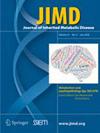Long-Term Outcomes of Chenodeoxycholic Acid Therapy for Cerebrotendinous Xanthomatosis: A Nationwide Study on Prognostic Factors and Treatment Response
Abstract
Cerebrotendinous xanthomatosis (CTX) is a treatable neurometabolic disorder. Chenodeoxycholic acid (CDCA) is the first-line treatment and can potentially halt disease progression if initiated before neurologic symptoms appear. This nationwide, multicenter study evaluates the long-term effects of treatment in 86 genetically confirmed patients with CTX receiving CDCA for ≥ 6 months, focusing on neurologic and extraneurologic outcomes, prognostic factors, and biochemical response. Clinical and biochemical parameters were recorded at baseline and follow-up, and neurological outcomes were assessed using neurological disability scores. Our results indicate a critical age of 28 years for the start of treatment. Patients diagnosed before 28 years showed 100% neurological stabilization or improvement, whereas patients diagnosed later had a higher rate of disease progression (p < 0.05). CDCA effectively stabilized or improved pyramidal and cerebellar symptoms, although myoclonus and parkinsonism remained less responsive. Psychiatric symptoms showed a lower treatment response, with psychosis being the most refractory finding. CDCA resulted in a strong and sustained reduction in cholestanol levels, although biochemical response did not always correlate with clinical improvement. Longer diagnostic delay and presence of anxiety and pyramidal/cerebellar symptoms were associated with poorer outcomes. Notably, a cholestatic child, for whom liver transplantation had initially been considered, recovered completely under CDCA therapy. Our results show that early diagnosis and initiation of CDCA therapy significantly improve neurological outcomes in CTX. However, even in late-diagnosed patients, treatment continues to be beneficial, demonstrating that it is never too late to start therapy. Biochemical response does not always predict clinical improvement; multidisciplinary follow-up is essential.


 求助内容:
求助内容: 应助结果提醒方式:
应助结果提醒方式:


